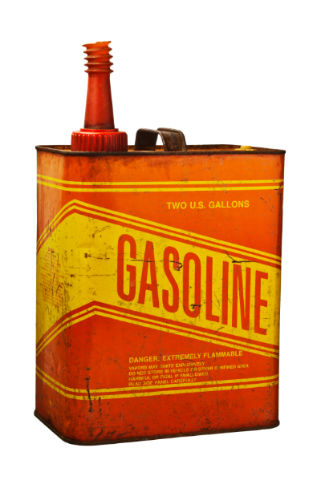
In a world where AA batteries are posing a threat to the environment, the understanding of what household hazardous waste is needs to be more widespread.
First, a startling fact: Americans generate 1.6 million tons of household hazardous waste per year, according to the
Environmental Protection Agency. Hazardous materials range form automotive to construction supplies, but no part of the house is immune. The main categories of the household hazardous waste are automotive products, home improvement products, pesticides, household cleaners and miscellaneous beauty and art supplies. Let’s look at each one, and then at clues to what might cue you in to the hazardous contents before you buy.
The following products are either flammable, reactive or explosive, corrosive or toxic, broken into categories:
- Automotive products. Examples: gasoline, motor oil, antifreeze, windshield wiper fluid, car wax and cleaners, lead-acid batteries, brake fluid, transmission fluid
- Home improvement products. Examples: paint, varnish, stain, paint thinner, paint stripper, caulk, adhesives
- Pesticides. Examples: insecticide and insect repellent, weed killer, rat and mouse poison, pet spray and dip, flea collars, mothballs, disinfectant, wood preservative
- Household cleaners. Examples: furniture polish and wax, drain opener, oven cleaner, tub and tile cleaner, toilet bowl cleaner, spot remover, bleach, ammonia
- Other. Examples: household batteries, cosmetics, pool chemicals, shoe polish, lighter fluid, prescription medicines, arts and crafts materials
Luckily, federal law requires that warnings for this kind of material be available for consumers to read. When shopping, look for keywords like “Danger” or “Poison” for highly toxic materials, and “Warning” or “Caution” for moderately or slightly toxic materials. Check before you buy; the warnings are on many popular products.
However, not all is lost if you have hazardous household waste to get rid of; most of it can be dealt with by sending the materials to the appropriate place. See how and where to send everything from batteries to paint on a 1-800-RECYCLING feature, “
Household Items and How To Recycle Them Safely.” You may be surprised at the options for things you never knew you could recycle. Just remember that you don’t want to try to recycle any of the above-mentioned items yourself.
1-800-RECYCLING can help you find a location to safely recycle hazardous items. Search your ZIP code in our recycling location search.
 In a world where AA batteries are posing a threat to the environment, the understanding of what household hazardous waste is needs to be more widespread.
First, a startling fact: Americans generate 1.6 million tons of household hazardous waste per year, according to the Environmental Protection Agency. Hazardous materials range form automotive to construction supplies, but no part of the house is immune. The main categories of the household hazardous waste are automotive products, home improvement products, pesticides, household cleaners and miscellaneous beauty and art supplies. Let’s look at each one, and then at clues to what might cue you in to the hazardous contents before you buy.
The following products are either flammable, reactive or explosive, corrosive or toxic, broken into categories:
In a world where AA batteries are posing a threat to the environment, the understanding of what household hazardous waste is needs to be more widespread.
First, a startling fact: Americans generate 1.6 million tons of household hazardous waste per year, according to the Environmental Protection Agency. Hazardous materials range form automotive to construction supplies, but no part of the house is immune. The main categories of the household hazardous waste are automotive products, home improvement products, pesticides, household cleaners and miscellaneous beauty and art supplies. Let’s look at each one, and then at clues to what might cue you in to the hazardous contents before you buy.
The following products are either flammable, reactive or explosive, corrosive or toxic, broken into categories: